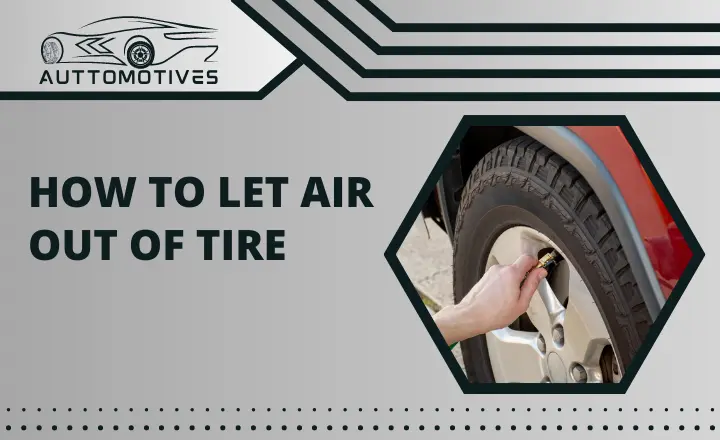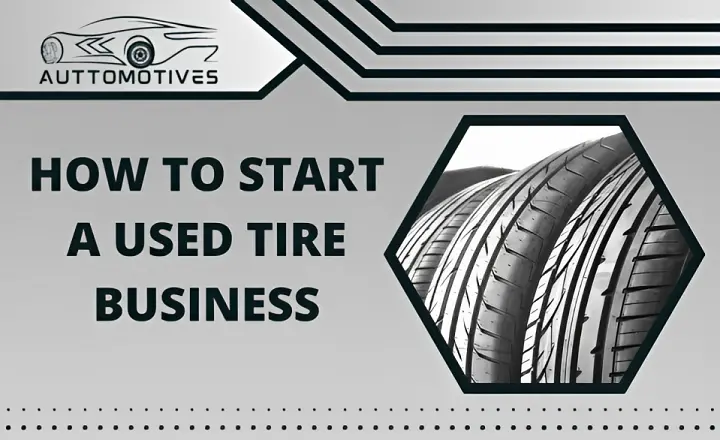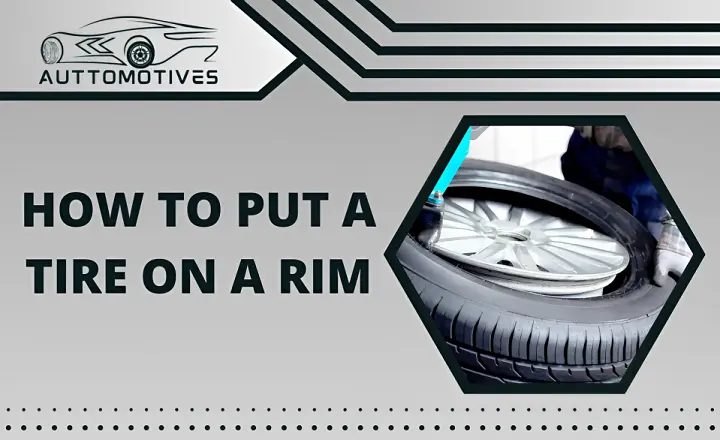Can you Change Tire Size on the Same Rim?
Tire size affects everything from acceleration and braking to handling and fuel efficiency. There may be instances where you want to change your tire size without changing the actual rims. This raises the question, can you change tire size on the same rim? The answer is yes, but it’s crucial that you do so with caution. We are here with a detailed look at whether or not you can change tire size on the same rim. We’ll explore various aspects such as how changing tire sizes impacts your vehicle’s performance, what factors to consider before making any changes, and how to ensure that you’re changing tire sizes safely.
How to find the size of the car tire
Do you have a flat tire and need to replace it? but didn’t know the size? No issue! Just follow these simple steps.
- Locate the sidewall markings on each tire.
- These markings are usually found on the outer wall of each tire and include information such as the brand name, model number, and size.
- The size will typically be displayed as a set of numbers and letters separated by slashes.
- For example, it might read “P215/60R16”. To interpret these numbers correctly, you’ll need to understand what they mean.
If these options don’t work for you, then use a tire gauge to measure your current tires’ height and width (in millimeters). To find out what six tires are used by default for that car model year or type visit the manufacturer’s website.
You can also locate the vehicle’s owner’s manual, which should be in the glove box or trunk. This will have all of the information you need regarding your car’s tires, including its recommended size.
How Changing Tire Sizes Impacts Your Vehicle’s Performance
Maybe you hear that larger tires can improve off-road performance, or smaller tires can improve fuel efficiency. But did you know that altering your tire size can have a significant impact on your vehicle’s overall performance? Here’s how:
- Tire diameter affects speedometer accuracy: If you change the tire size, it will affect the rolling circumference of the tire, which in turn affects how many revolutions per mile your wheels make. This impacts how accurate your speedometer is, and could potentially lead to speeding tickets or other issues.
- Larger tires can improve off-road performance: If you’re looking for better traction and ground clearance when off-roading, larger tires may be a good option. Keep in mind that they can also affect your vehicle’s stability and handling.
- Smaller tires can improve fuel economy: In general, smaller tires are lighter and require less energy to rotate than larger ones. This means that switching to smaller tires could potentially help you save money on gas in the long run.
Factors Behind Choosing the Correct Tire Size to Use on the Same Rim
When selecting a tire size, several factors need to be taken into consideration, such as load capacity, speed rating, sidewall height, and rolling resistance.
Load Capacity
The load capacity factor indicates how much weight a tire can safely carry while in use. If you’re planning to haul heavy cargo or tow a trailer with your vehicle, it’s essential to select tires that have an adequate load-carrying capacity. Otherwise, you run the risk of experiencing blowouts and other dangerous situations on the road. Remember, each tire has its own unique specifications when it comes to weight-bearing capabilities.
Rim Size
The rim’s diameter determines what tire sizes are appropriate for it. The aspect ratio of a tire also plays a crucial role in selecting the proper size of tires that will fit on the same rims. For example, low-profile tires with a small sidewall height usually require larger diameter rims than other types of tires. A larger rim size will benefit from having shorter sidewalls because it provides better handling and stability at higher speeds. Conversely, smaller rims work well with higher-profile tires because they offer more cushioning against road hazards and impact forces.
Vehicle Type:
Maybe a question comes to your mind why this is so important? Choosing a larger or smaller tire than what your car’s manufacturer recommends can negatively affect its handling and performance on the road.
Let’s take pickup trucks as an example. These vehicles are known for their versatility, strength, and ability to handle heavy loads. As such, they require tires with more substantial sidewalls and higher load capacity ratings than standard passenger cars. Similarly, sports cars need wider tires with lower profiles that provide better traction during high-speed cornering maneuvers. On the other hand, family SUVs require larger-diameter tires with all-season treads that offer better grip in wet conditions.
Speed Rating
The speed rating refers to the maximum speed capability of a tire under ideal conditions and is represented by a letter code. Each letter corresponds to a specific top speed, ranging from 75 mph all the way up to over 200 mph. This ensures that your tires can handle the speeds you plan on driving safely. If you plan on regularly driving at high speeds, it’s essential that you choose a tire with an appropriate speed rating. Keep in mind that going for higher speed ratings often means sacrificing other factors such as handling or ride quality.
What Tire Sizes Are Interchangeable on the Same Rim?
Sometimes vehicle owners face a situation where their tires got flattened and you are left with no spare one. Or maybe the size of the tire is not available in the local store, and you wonder if other tire sizes would fit on your rim. So, there’s good news. Yes, you hear right! There are some tire sizes that can be interchangeable on the same rim.
For instance, a 235/65R17 tire size can be substituted with any other tire that has an aspect ratio of 65 and a diameter of 17 inches. Similarly, if your car’s original equipment (OE) tires have worn out, you can replace them with different sizes as long as they maintain the same load index and speed rating as OE tires. It’s crucial to consult with a professional mechanic or refer to the vehicle owner’s manual to ensure that any replacement does not affect safety or performance.
Pros and Cons of Having Bigger Tires
Pros
- Better ground clearance and off-road capability.
- Improved traction and handling on rough terrain.
- Increased visual appeal and aggressive look.
- Enhanced braking performance due to a larger contact patch.
- Increased obstacle traversal ability.
Cons
- Higher cost for purchasing and installing larger tires.
- Reduced fuel efficiency due to increased rolling resistance.
- Potential speedometer error and incorrect odometer readings.
- Extra wear on suspension components due to increased weight and stress.
- Difficulty in steering, parking, and maneuvering in tight spaces due to wider turning radius and slower response time.
How To Ensure That You’re Changing Tire Sizes Safely
If you’re changing tire sizes, it’s important to do so safely in order to avoid potential issues like reduced handling, decreased fuel efficiency, and even damage to your car. Here are some key steps you should take when changing tire sizes:
- Check compatibility: Make sure the new tires will be compatible with your wheels and won’t cause any rubbing or clearance issues.
- Consider speedometer calibration: When you change the size of your tires, it may affect your speedometer reading – make sure this is adjusted properly.
- Avoid oversizing: It’s essential not to exceed the safe diameter range specified by the manufacturer as oversized tires can affect handling and braking.
- Keep speedometer calibration in mind: Different-sized tires can affect speedometer readings which could lead to legal penalties if driving over speed limits.
- Consult with an expert: Before making any changes, talk with a mechanic or tire professional who can advise you on the right size for your vehicle.
- Check the owner’s manual: The manufacturer will provide tire specifications in your vehicle’s handbook. This information includes recommended tire sizes, types, and load capacity.
Frequently Asked Questions
Can you change the tire size without changing the rim size?
Yes, you can change tire size without changing rim size. The tires may not fit properly on the rim if the rim is too large or too small. In order to ensure a proper fit, it is important to have the correct tire size and rim size.
Can you put the wrong size tire on a rim?
Yes, you can put the wrong size tire on a rim. This can happen if the tire is not the correct width for the rim or if the bead is not seated properly on the rim. If this happens, the tire will not rotate and will cause the wheel to wobble.
Can you put 2 different size tires on a car?
You can put two different size tires on a car, as long as the diameter of the smallest tire is no more than 1.6 inches (4.1 cm) smaller than the diameter of the largest tire.
I hope thoughts on “Can you Change Tire Size on the Same Rim“, have provided you a good understanding of the factors that come into play. By referring to this detailed guide, you now know how to make informed decisions about changing tire size and what to expect in terms of performance and safety. But, remember that changing tire size on same rim can impact other parts of your vehicle, including your speedometer calibration and suspension system. So before making any changes, consult with an expert mechanic for advice on the best course of action for your specific vehicle. With this knowledge in hand, you are ready to upgrade your ride’s look and feel while staying safe on the road.







